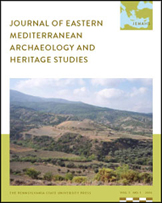Skenè. Journal of Theatre and Drama Studies
ISSN: 2421-4353
ISSN: 2421-4353
The journal wishes to inspire and host, in a new academic site, a vivacious debate on issues, questions and specifics of drama and theatre texts from antiquity to the present. Areas of special interest are the forms, modes and genres of play texts, and the impact of dramaturgy and performance on their codification. The journal intends to stimulate a discussion on critical approaches to the play text and the performance text within an interdisciplinary context. Philological, linguistic, rhetorical, semiotic, and translation studies, as well as literary and philosophical hermeneutics, reception studies, sociology of theatre, and performance studies will all contribute to a lively confrontation between different perspectives and critical views. The journal promotes the interaction between international scholars of various humanistic areas, furthering a dialogue between renowned and younger researchers.
Skenè. Journal of Theatre and Drama Studies is a peer-reviewed publication.
Issues: Biannual (Spring and Fall), on-line and print on demand, illustrated.
Founded: 20142015
See the full List of Open Access Journals in Ancient Studies

























